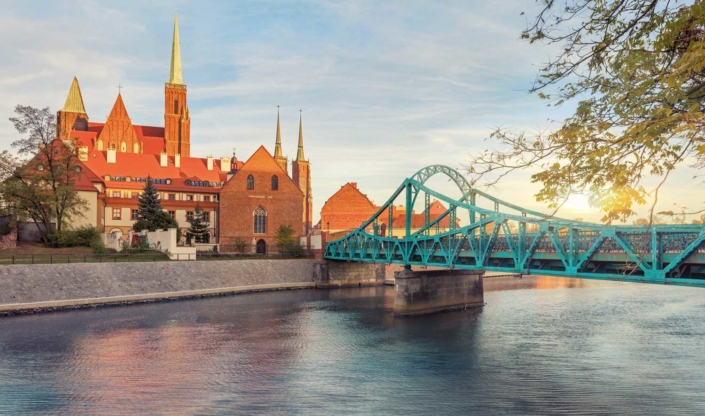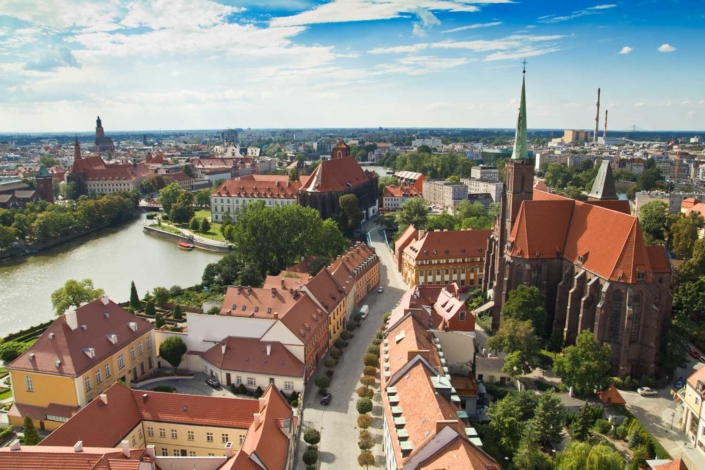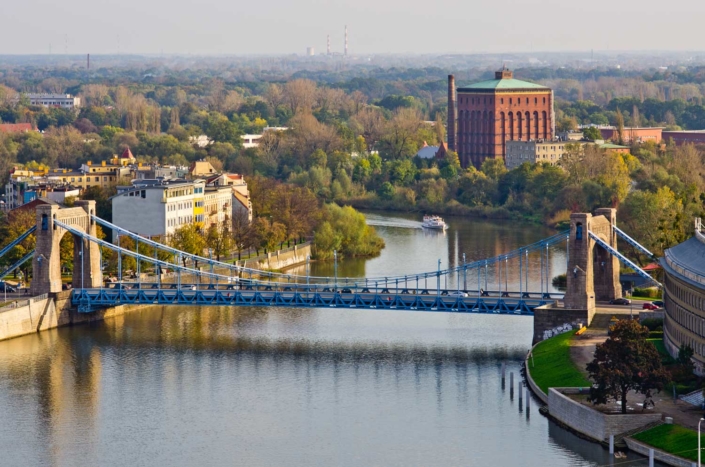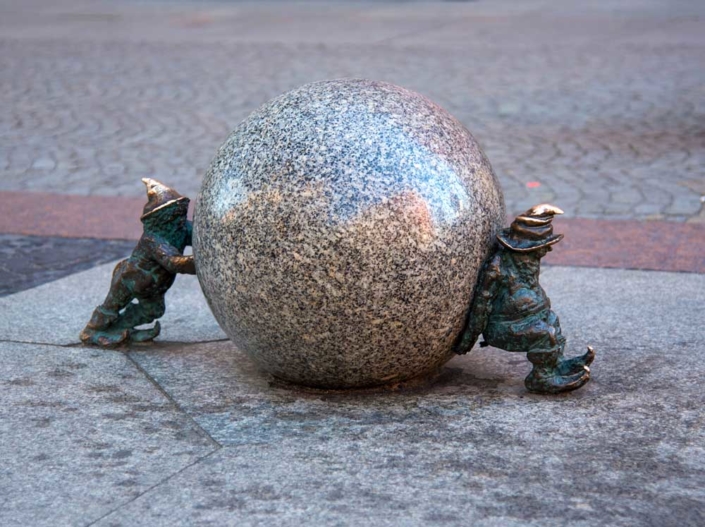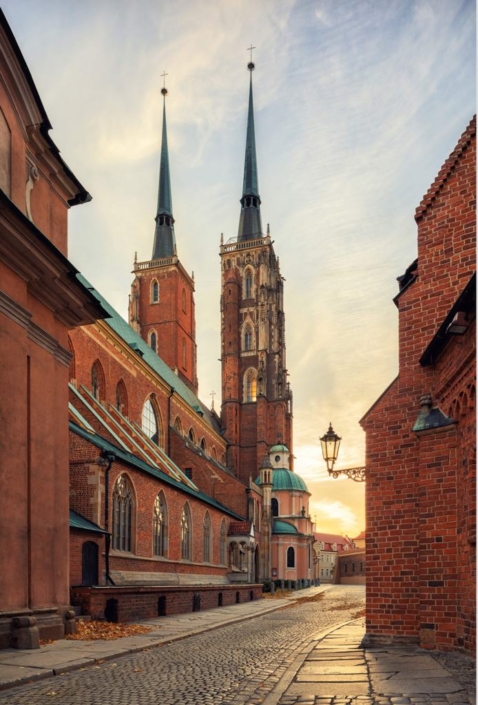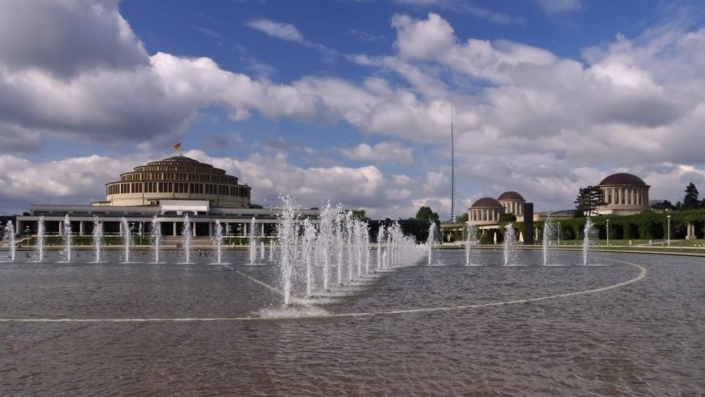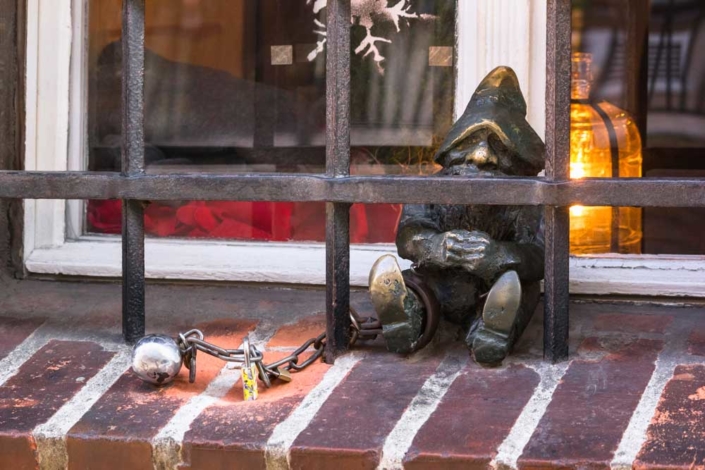Worth to Visit in Wroclaw
Wroclaw unique city
consisting of 12 islands connected with 117 bridges; it is situated on the Oder river and four of its tributaries: Ślęza, Oława, Bystrzyca and Widawa.
As the largest city of the Lower Silesia, it is its administrative, economic and cultural capital. The history of the city is over a thousand years old, and the heritage of the past combines with the modernity of the business centre.
Wroclaw is a city of tolerance and many religions: Catholicism, Protestantism, Orthodox faith and Judaism. Multicultural, open to new ideas and challenges, the city is famous for its hospitality, and its cultural and scientific life fascinates and attracts. The unusual history of Wroclaw, constantly enriched by prestigious scientific and cultural events, combined with Polish hospitality and openness of the city, guarantee that everyone who comes here will certainly see and experience something interesting, regardless of whether they spend several hours or several days here.
Ostrow Tumski
Ostrów Tumski, known as Cathedra Island, is the oldest part of Wrocław. Surrounded by the River Oder, this former garden, which gave rise to the city of Wrocław, is now featuring a number of impressive monuments. The most prominent monuments include:
Saint Bartholomew’s Collegiate
The collegiate church was founded by prince Henry the Probus as a votive offering after the end of his long-standing political-ecclesiastical dispute with the bishop of Wroclaw, Thomas II, completed in 1287. Collegiate church of St. Cross and Bartholomew is a high, brick church hall. It has an unusual two-storey interior layout in Silesia: the lower church of St. Bartholomew and the upper of Holy Cross, with almost the same layout.
Located on the island is also the Archdiocese Museum, which for more than one hundred years has been collecting sacred art, including the celebrated Book of Henryków.
The Book of Henrykow is dated to 13th-14th centuries and is know to feature the first sentence to have ever been recorded in Polish. The document was listed in the UNESCO Memory of the World Register.
The Cathedral of Saint John the Baptist
The Cathedral of Wrocław is one of the most precious monuments of the city. Its creation is associated with the date of 1000 when the Congress of Gniezno, along with the foundation of bishopric of Wrocław took place (since 1930, the archbishopric). The Cathedral was destroyed many times and rebuilt in 1951. It has twenty chapels and the most glorious are the gothic Chapel of Saint Mary, and the two baroque Chapels of Saint Elisabeth and Corpus Christi, known also as the Electoral Chapel. The cathedral has four bells and pipe organ with 151 voices is located in the choir.
The Holly Cross
The cathedral Church of the Holy Cross is a Gothic church with neo-Gothic elements, a hall, three-aisled church, with two towers at the western side and a stellar vault from the mid- 16th century.
The Market Square Area
The Wroclaw Market Square covers almost 3.8 hectare and is included among the largest old market sites in Poland. The centre of the square features the Cloth Hall and the Town Hall, the latter being a unique specimen of Gothic and Renaissance architecture..
The Town Hall, which once housed the city authorities, has been converted into the Museum of the Bourgeois Art. In front of its eastern façade stands the faithful copy of the mediaeval Pillory, and in front of the western façade the Aleksander Fredro Monument.
The Market Square is surrounded by townhouses funded by Wroclaw patricians. In a style distinct from the other buildings at the Market Square, there is an original building – a modernistic tower block designed by Heinrich Rump and constructed in 1930.The whipping post, fountain and Fredro’s monument are the most popular landmarks at the Market Suare and meeting point of Wroclaw inhabitants and their guests.
Four Denominations District
Four Denominations District is part of the Old Town enclosed by ul. Kazimierza Wielkiego, ul. św. Antoniego, ul. Pawła Włodkowica and ul. św. Mikołaja. In close proximity, the district features four different temples representing four different denominations: an Orthodox church, a Roman Catholic church, a Lutheran church and a synagogue. Two tourist trails run across the district: the culture trail and the historic trail. The area also boasts a number of good hotels, many bars, galleries and music clubs.
The Centennial Hall
The Centennial Hall is one of the most prominent landmarks in the history of 20th-century architecture. Designed by the eminent architect Max Berg, it was created in 1913 to celebrate the international exhibition commemorating the Battle of the Nations. In 2006, the site was enlisted in the UNESCO World Heritage Register.
The Centennial Hall complex also features the Four Domes’ Pavilion, designed by the eminent architect Hans Poelzig and developed from 1912–1913. The building, which formerly housed the Wrocław Feature Film Studio, now features one of Poland’s most intriguing and developed collections of Polish contemporary art (the property of the National Museum in Wrocław). The Centennial Hall is surrounded by the Pergola, which boasts one of the largest multimedia fountains in Europe.
Panorama of the Battle of Raclawice
Panorama of the Battle of Racławice in Wrocław is an impressive relic of 19th-century century mass culture, is one of only few examples of this genre preserved in Europe. The large painting (15 × 114 m) ‘transfers’ the viewer into an altogether different time, a reality of its own, by artfully combining painterly devices (special kind of perspective) and technical effects (lighting, artificial terrain, dark and usually tortuous passage to the viewing platform).
Panorama of the Battle of Racławice is the oldest and only extant example of panorama painting in Poland. The project was conceived as a patriotic manifestation commemorating the 100th anniversary of the victorious Battle of Racławice, a famous episode of the Kościuszko Insurrection, a heroic but in the end fallen attempt to defend Polish independence.
The battle was fought on 4 April 1794 between the insurrectionist force of regulars and peasant volunteers (awesome scythe-bearers) under Kościuszko (1746–1817) himself and the Russian army commanded by General Tormasov. For the nation which had lost its independence, the memory of this glorious victory was particularly important.
The huge panorama painting was executed within 9 months, between August 1893 and may 1894.
Wroclaw’s Gnomes
Gnomes, or ‘Krasnale’ are one of Wrocław’s most popular attractions. There are around 300 small gnomes living in this one of the most beautiful city of Poland. New gnomes arrive every year, gradually populating more and more streets in Wrocław. People from all over the world are coming to hunt for them.
They play an important role in Wroclaw’s daily life and history.Wroclaw’s Gnomes history dates back to 80s, when the country was under communist regime. Members of Pomaranczowa Alternatywa (Orange Alternative) wanted a peaceful campaign, which help to bring a dark period of history in Poland to an end. They decided to paint dwarves on paint stains on the walls covering the anti-government graffiti. Dwarves present everywhere, soon became symbols of the Polish dissident.
With reference to art. 13 (1) and (2) of the Regulation (EU) 2016/679 of the European Parliament and of the Council of 27 April 2016 on the protection of natural persons with regard to the processing of personal data and on the free movement of such data, and repealing Directive 95/46/EC (hereinafter referred to as the “GDPR”), we hereby inform that the Controller of your personal data is Polish Travel Quo Vadis Sp. z o.o. with a registered office in Warsaw, 00-138 Warsaw, ul. Ptasia 2.
The personal data provided, in particular, your first name, surname, address, e-mail address, phone number, are processed to the extent necessary to commence, shape the content, amend, terminate and properly perform the services rendered by Polish Travel Quo Vadis Sp. z o.o. and to complete your orders. Detailed information has been provided in the Privacy Policy.
Visit Poland is one the brands owned by Polish Travel Quo Vadis fully licenced tour operator in Poland, who is one of the leading tourism companies since 1990. Visit Poland DMC is your Destination Management Company in Poland and Central Europe, dedicated to offer the best of Poland and the neighboring countries such as Germany, the Czech Republic, Slovakia, Austria, Hungary, Ukraine, Belarus, Russia, Lithuania, Latvia, Estonia, Finland, Sweden, Denmark. With more than 28 years in travel industry, we are premier travel provider, who offers a truly fascinating and extraordinary experience. Out team of professional travel consultants are the bridge to your holiday in Poland and Central Europe. Visit Poland is your gate to Central Europe and all cities and destinations in Poland like: Warsaw, Cracow, Wroclaw, Gdansk, Poznan, in Germany like Berlin, Frankfurt, Munich, Drezno, Poczdam, in Czech republik like Praha, Karlove Vary, Brno, in Slovakia like Bratyslava, in Hungary like Budapest, in Ukraine like Lvov, Kijev, Odessa, in Belarus like Minsk and more …..
Visit Poland DMC were west meets the east. The gate to Central Europe!
Visit the best places in Poland and Central Europe with us! Visit Poland DMC your Destination Management Company DMC in Poland DMC Warsaw DMC Cracow DMC Wroclaw DMC Gdansk DMC Poznan DMC Sopot DMC Gdynia DMC Zakopane DMC Europe DMC central Europe DMC Eastern Europe DMC.


